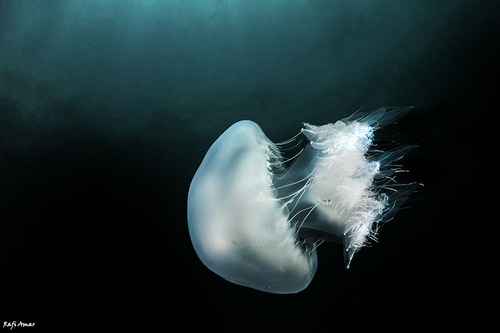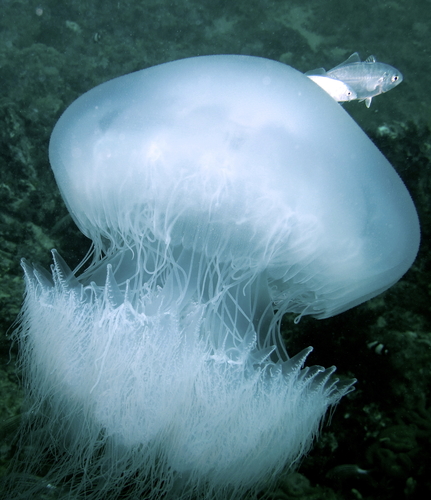
Rhopilema nomadica Galil, 1990
It is a marine bivalve with a thick, strongly ribbed shell. The hinge line bears numerous teeth, arranged in a line on both valves. Both valves have prominent beaks which are set close to the anterior end and curved inward. The shell is heart-shaped in a side view. The shell is somewhat oblong, with straight shoulders below the beak. Both shells have about 12 radiating ribs. The shell is white, but it is covered with a brown periostracum. This bivalve does not have a siphon. This shell typically reaches 25 mm. Ark shells occasionally attach to rocks and shells with byssus threads.
Siokou-Frangou I, Sarantakos K, Christou ED (2006). First record of the scyphomedusa Rhopilema nomadica Galil, 1990 (Cnidaria: Scyphozoa: Rhizostomeae) in Greece. Aquatic Invasions 1(3): 194-195.
2006
UNA
Nomad jellyfish
It lives close to the water surface, forming large swarms. Recorded at a distance of 2-4 km off shore but can be swept near the shore and into the intertidal zone. Usually of 40-60 cm in size, but can reach up to 90 cm.
Forms dense swarms that might outcompete the native jellyfish Rhizostoma pulmo. It serves as a shelter for juveniles of the alien fish Alepes djedaba. High abundances of the fish were related with increased numbers of the jellyfish.
Very dangerous to humans, as it can cause painful injuries that may lead to hospitalizations. This results in problems to sea tourism and related leisure activities. Due to the large swarms formed, it may clog fishing nets, pipelines in power plants, etc, causing a serious economic problem.
No
Yes (painful sting)
Records of Rhopilema nomadica
Sites where Rhopilema nomadica has been recorded in the Hellenic Seas.


